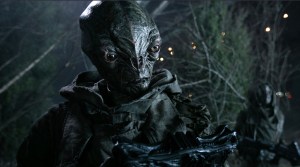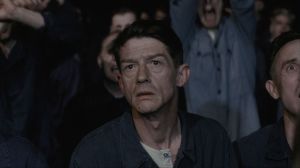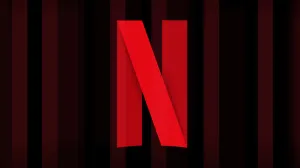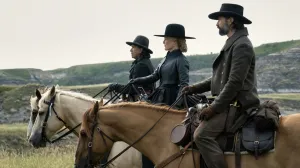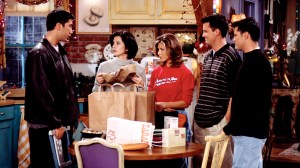
The first collection of Family Tree, a new Image Comics series from artist Phil Hester and writer Jeff Lemire, is available this Wednesday. Family Tree fuses small town family dynamics with apocalyptic horror in one of the most striking debuts of the past year. As the series enters a new phase, the release of the first collection offers a chance for current readers to reflect on a story that already feels as strong and sprawling as the roots some characters literally grow. ComicBook.com writer Chase Magnett had the opportunity to discuss the development of Family Tree, the comics’ design and style, and what comes next with Hester. You can read their full conversation below before the first volume lands later this week.
Videos by ComicBook.com
ComicBook.Com: Before this interview I gave my wife a quick rundown of what Family Tree is and was quickly struck by how well the first five issues defy genre conventions and familiar concepts (and how patient my wife is). When friends or family outside of comics ask what you’re working on, what’s the quick pitch you give them for Family Tree?
Phil Hester: I usually say it’s about a little girl who slowly turns into a tree, and a desperate race between a family struggling to keep her alive and a creepy cult sworn to destroy her before she can destroy the world. Basically, it’s a family horror drama that spins out into an apocalyptic, metaphysical thriller. To put it in film terms, it begins as a kind of claustrophobic body-horror piece, then blossoms into a big Christopher Nolan kind of head trip.
ComicBook: Family Tree consistently modulates its tone throughout the first five issues—offering readers apocalyptic landscapes beside family dinners with visions of cults, psychedelic journeys, and more scattered between. Did you find yourself returning to any of your past work (or other sources of inspiration) when developing the look and designs for the series?
Hester: I just knew I wanted it to look invasive. I mean, I wanted the lines and shadows to have the character of a creeping vine or spreading lichen. Of course my time on Swamp Thing was chock full of that aesthetic– life growing wildly, totally amok, ironically bringing death through growth. Combining what I learned from those earlier depictions of florid, anarchic sprawls with the lean, blasted look I developed on Warren Ellis’s Shipwreck landed Family Tree in a unique space that’s crawling with both life and death in equal measure.
I made a conscious decision to cede some control of my drawing style by holding my pencil farther away from the point. That introduced an element of random, chaotic mark making that I had to integrate into the finished, cohesive drawing. The book is basically a document of that struggle. The result is a less streamlined, more idiosyncratic mark that people probably haven’t seen in my work since Boneshaker in the early 90s.
Eric Gapstur was my inker on Shipwreck, so he was already hip to the kind of sparse, skeletal line and organic, chalky blacks I was after. The washed out, flat color by Ryan Cody is something we took a long time to fine tune until it fit that same “faded snapshot” aesthetic. Both guys have been killing it.
ComicBook: One specific element I appreciated from the first issue was how a dark, dangerous future was juxtaposed against mundane family drama. The contrast makes the evolving elements of body horror and the unknown much more impactful. What was your process in crafting those two distinct sensibilities from the very start, before they had a chance to collide?
Hester: Well, I knew about the scope of the story before I started, so I couldn’t help but at least subconsciously let that sense of impending doom creep into the look of the book from the very beginning. I guess it’s sort of like the way John Carpenter handled Halloween. There’s quite a stretch at the beginning of the film where nothing explicitly scary happens, but there’s a tingling sense of foreboding infusing even the most mundane scenes. That’s what we were after. Our goal was a keen portrait of a relatable family, all the while knowing something really mind-bending was coming toward them.
ComicBook: Is there a chance that those sorts of juxtapositions between the past and present will continue as the story progresses?
Hester: Oh, yeah. In fact, there are some coming that change the whole tone of the series and maybe how you think about some of your favorite characters.
ComicBook: One other element that made the first arc of Family Tree stand out to me was the out-of-body sequence in which a greater truth behind these events is first explored. Are you looking forward to experimenting more in this “area” in the future?
Hester: I better be, because we go there a lot more as the series goes on.
ComicBook: Re-reading the first issues of the series, there’s also a potent fear of an unknown pathogen and its spread present in how the story reveals itself. Have the past few months given you a new perspective on the story you’re telling?
Hester: Yes. It’s made it much less enjoyable, to be honest. Horror stories are all good fun until the horror outside your window looks even worse. There’s a twist on our fictional plague that definitely puts it into a different category than what we’re experiencing now, but I think that’s as far as I want to go in comparing them. Anything more would be trivializing the real life tragedies so many families are suffering through right now.
I guess the only positive parallel I’d draw is that the crucible Meg’s family goes through in this series brings them closer together. I wouldn’t go as far as to say I hope families in quarantine find a blueprint there, but hopefully they see at least a reflection of the kind of family solidarity tragic times can foster.
ComicBook: You’re working with inker Eric Gapstur on Family Tree. Every inker brings something different to pencils, what do you appreciate about Gapstur’s work in relation to your own on the series?
Hester: He’s a superb artist in his own right. If you’re familiar with his solo work, you know his individual aesthetic is light years from mine, but he’s such a sensitive interpreter of pencils that he can faithfully embellish my rougher, bleaker aesthetic on this series. Every time I try to drag him down some dark alley I don’t think he’d survive, he pops right back up, ready for more.
ComicBook: Ordinarily, I like to end interviews by asking creators what they are anticipating readers discovering in future issues. However, with the first volume dropping, I’d like to ask instead: What has you most excited for readers diving into this collection for the first time?
Hester: Hopefully you’ll grow to love Meg’s family as much as I do. Jeff is so adept at crafting small, illuminating scenes that color the larger story that I think you’ll find your way to a seat at Loretta’s dinner table with ease.
The first collection of Family Tree is available from all comics retailers this Wednesday and you can read the complete first issue for free from Image Comics.

